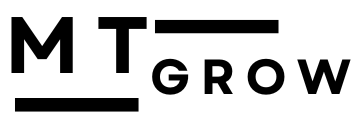Now we are going to guide you about the 3D printing in article I will guide you easy to understand the introduction and 3D printing concepts from this guide can help for those who are interested in 3D printing, whether it is a hobbyist, or tech interested , student in understanding the idea , manage and starting point of 3D Painting.
Introduction:
3D painting helps you create three-dimensional objects using a computer file, a technique called additive manufacturing design. 3D painting subtractive production, which is a process for generating shapes by eliminating material, produces objects layer by layer from bottom up.
How is 3D printing operational?
Create your model:First, you have to create a 3D model. First, 3D modelling programmes such as Blender, SketchUp, or Thikercard can be used to design 3D models. In addition, templets are also available at the location of Thingiverse.
Get the file ready:After that, when you collect your 3D model, you have to convert it into a format that the 3D painter can read. If we talk about stereolithography, it is widely used after converting the model into small layers using slicing software, for example, Cura or Prusaslicer, to generate a G-code file that the painter can read.
Configure the painter:We have to fill the filament, which we need for printing materials like PLA (polylactic acid) and ABS (acrylonitrile butadiene styrene), which are mostly used to make it separate. Once your model is printed, make sure your print is spotless and level.
Get printing now: You have to use wi-fi or USB to transfer the G-code file or SD card for printing. Once you have started printing, make sure you are printing layer by layer with your printer.
Following processing: When you print your object after it has been finished off your printer surface, you also have many qualities of a 3D printer.
Fused data message:If we talk about fused data printers, the most popular type of 3D printer is one that constructs things layer by layer.
Poros: In poros, there is a large section of material that is easy to use and affordable.
Cons: If we talk about his cons, the main cons are that it takes a long time to detail print, and the surface may print clear layers and lines.
Stereolithography:It transforms liquid resin into solid plastic with the use of a of a laser. The laser follows the layers layer by layer, built in shape.
Advantages:It has excellent accuracy and a soft polished surface.
Cons: Polymers can be hard to handle carefully; they are also more expensive.
Selective laser sintering also fuses powered materials, typically nylon, using laser to create solid objects.
Advantages: It has a strong and durable print that doesn’t require a support structure.
Cons: Princely and mainly used in industrial settings.
3D painting is produced with suitable material, for example, cornflour. It works very easily and breaks down easily.
Ideal for: beginners, enjoyment, and activities.
Selecting a 3D printer:If we talk about printers, FDM and Prusa Mini are excellent options at the beginner level. They offer us support and a network that is affordable and simple to use.
Conclusion:
In conclusion, I want to say it is a fascinating and useful technology that is easy to use every day as a 3D printing tool. With the help of it, you can easily learn amazing technology and speed it up if you understand the fundamentals of it and begin with projects. In 3D painting, it is possible to use it to create various unique designs with the help of 3D painting, so come forward and understand the things, enjoy and learn them, and make your creativity shine. It is best for every designer.

